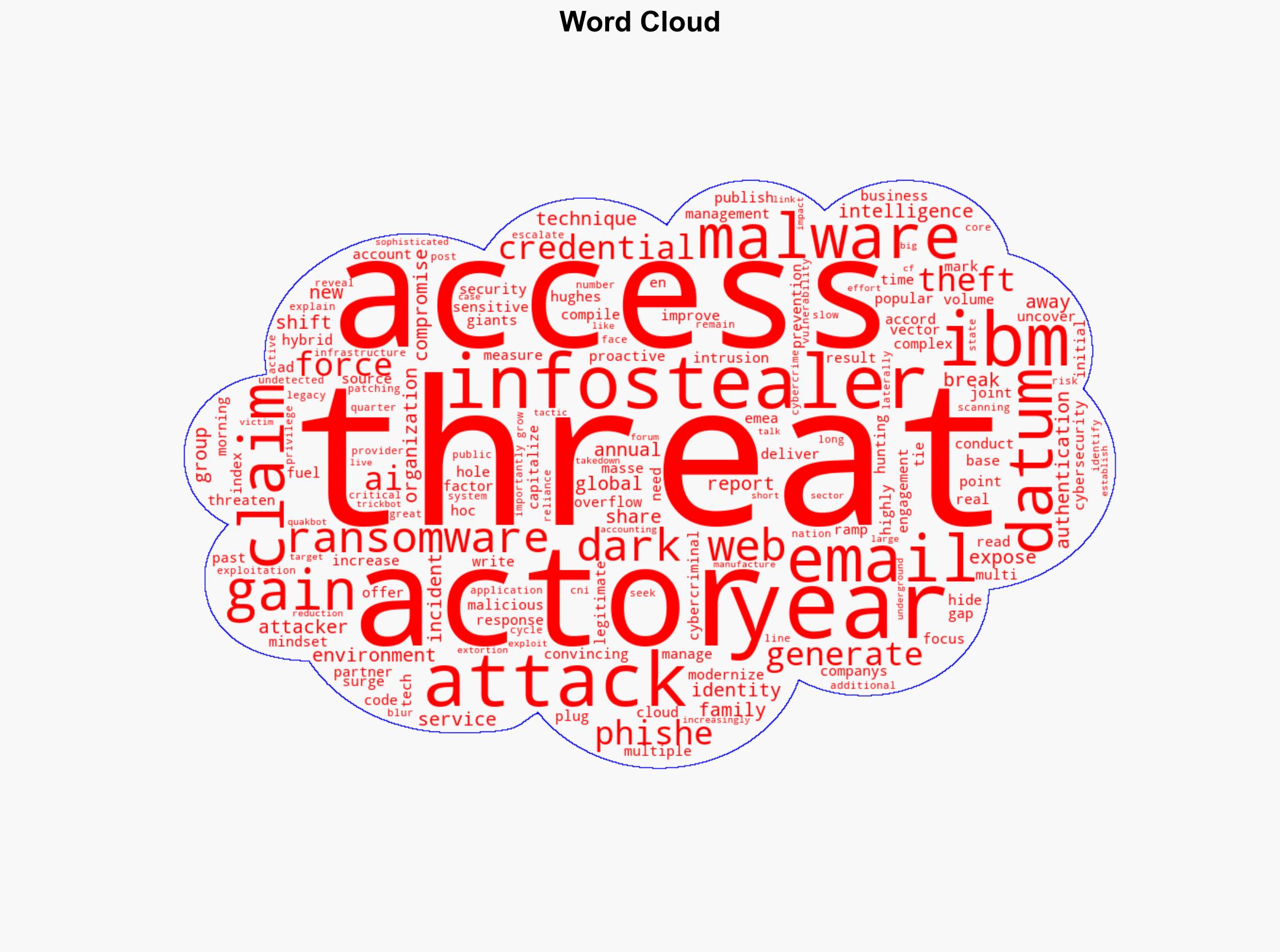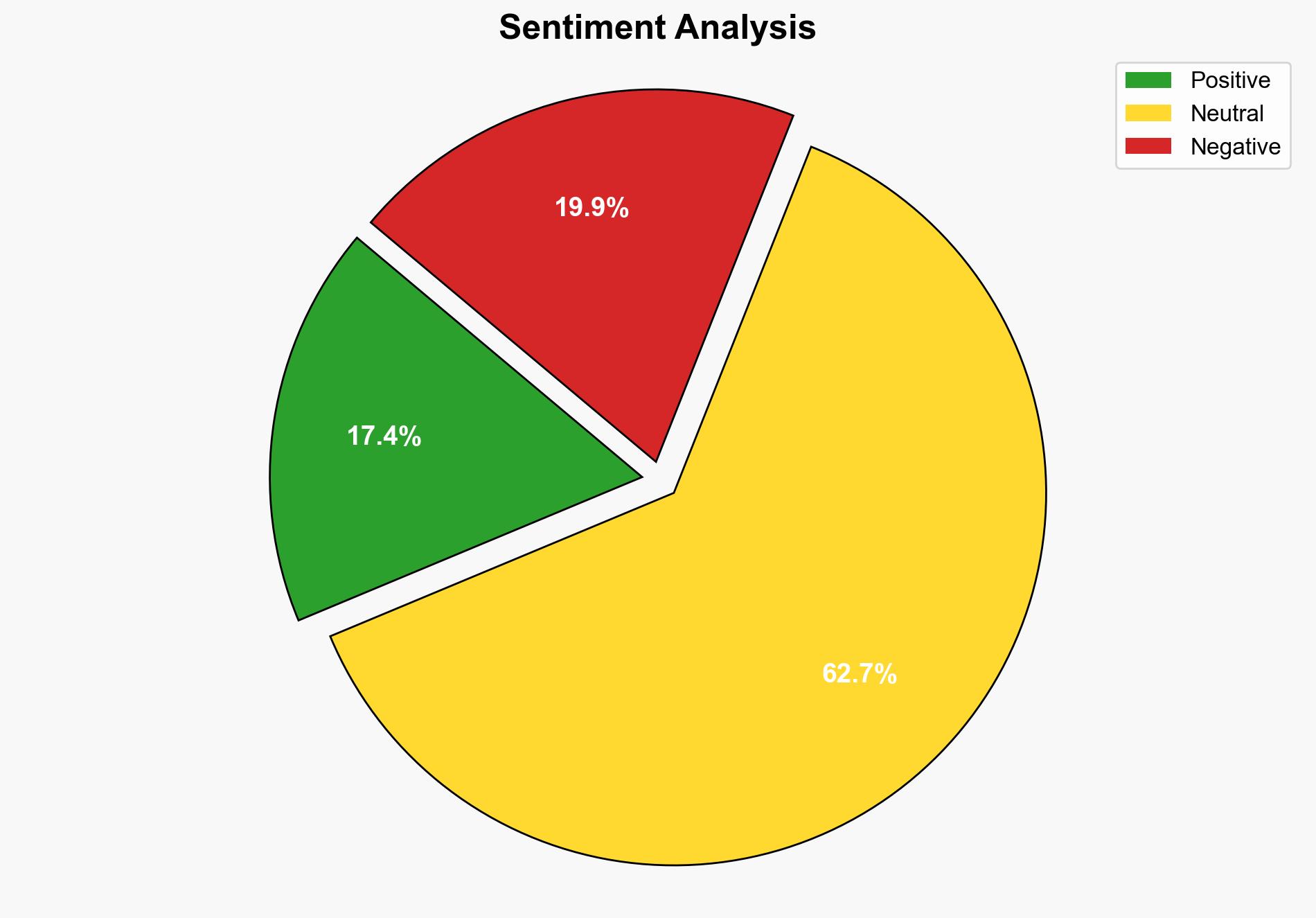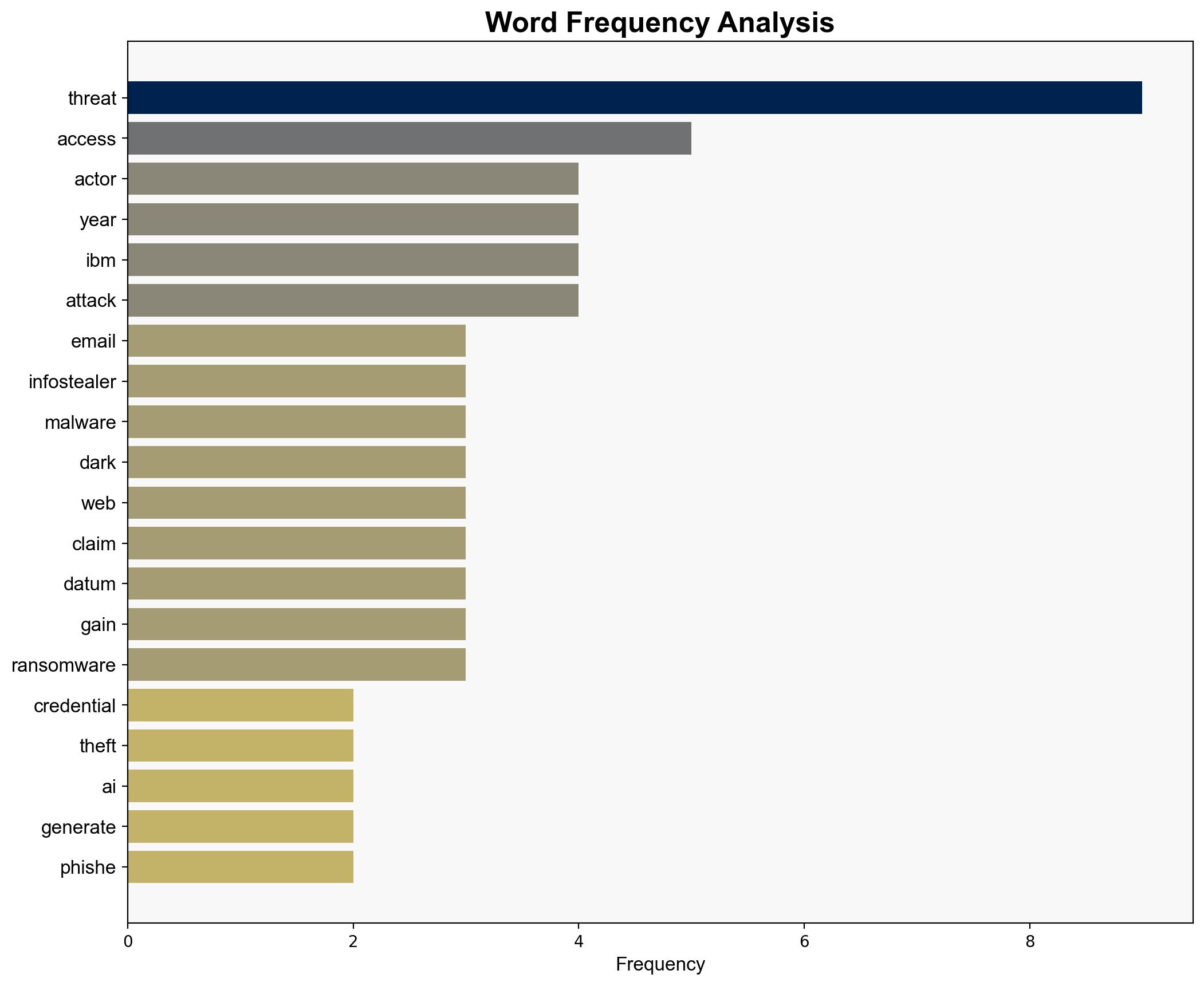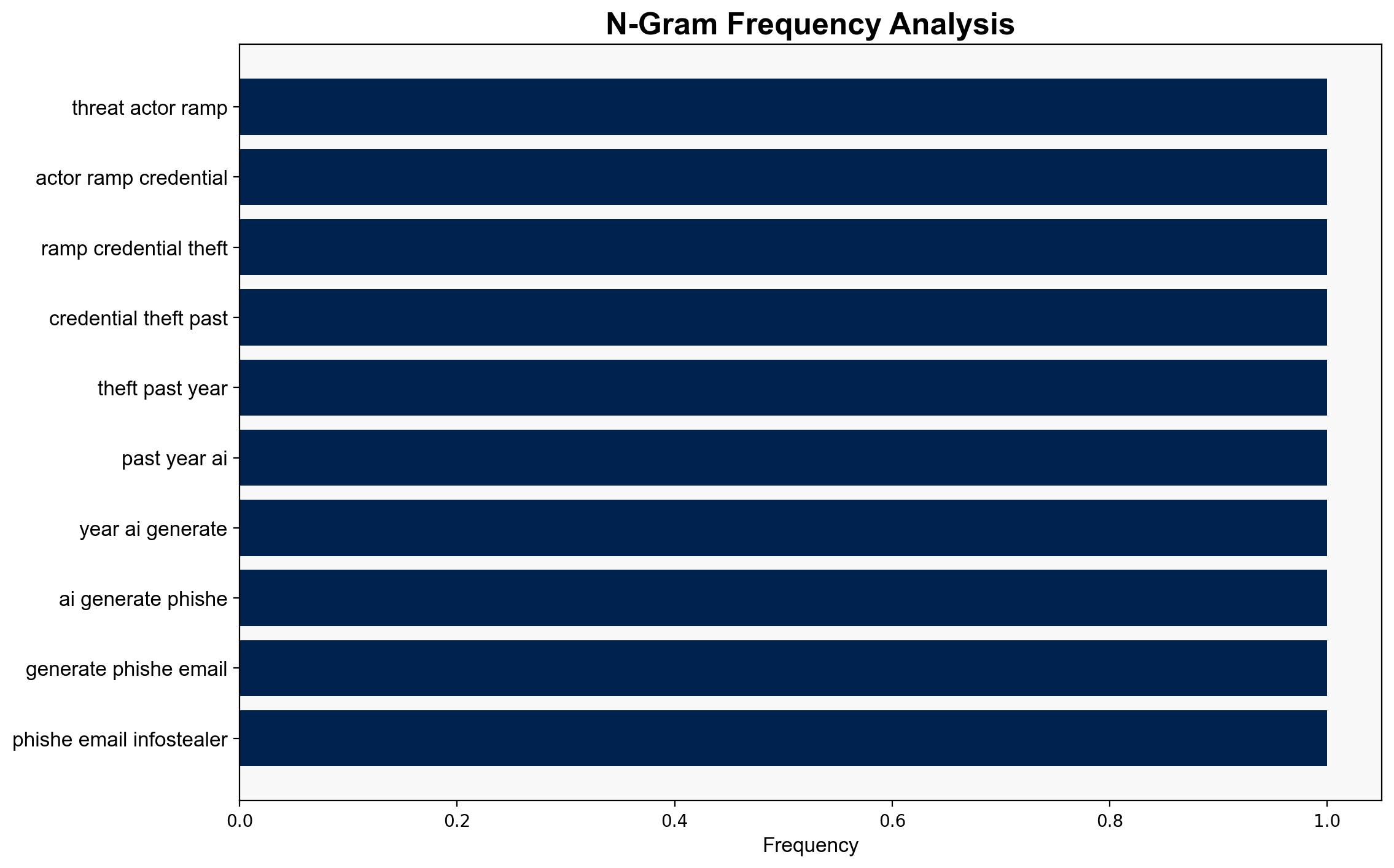Identity Attacks Now Comprise a Third of Intrusions – Infosecurity Magazine
Published on: 2025-04-17
Intelligence Report: Identity Attacks Now Comprise a Third of Intrusions – Infosecurity Magazine
1. BLUF (Bottom Line Up Front)
Identity-based attacks have surged, now accounting for approximately 30% of intrusions. This increase is driven by the use of AI-generated phishing emails and infostealer malware. Organizations must transition from reactive to proactive cybersecurity measures, focusing on modernizing authentication management and enhancing threat detection capabilities.
2. Detailed Analysis
The following structured analytic techniques have been applied:
Analysis of Competing Hypotheses (ACH)
The increase in identity attacks is likely due to several factors: the adoption of AI by threat actors to enhance phishing tactics, the exploitation of vulnerabilities in hybrid cloud environments, and the sharing of exploits on the dark web. These elements collectively contribute to the rise in credential theft and identity-based intrusions.
SWOT Analysis
Strengths: Advanced threat detection technologies and global takedown efforts have reduced the prevalence of traditional ransomware families.
Weaknesses: Legacy systems and slow patching cycles leave critical infrastructure vulnerable.
Opportunities: Implementing multi-factor authentication and real-time threat hunting can significantly reduce exposure to identity attacks.
Threats: The continuous evolution of ransomware tactics and the sharing of sophisticated exploits on the dark web pose ongoing risks.
Indicators Development
Key indicators of emerging cyber threats include an increase in AI-generated phishing attempts, rising discussions of CVEs on dark web forums, and shifts in ransomware tactics towards new malware families.
3. Implications and Strategic Risks
The rise in identity attacks poses significant risks to both public and private sectors, particularly in critical infrastructure. The exploitation of identity gaps and vulnerabilities in cloud environments can lead to severe data breaches and operational disruptions. Economically, the cost of cyber incidents is likely to increase as organizations invest more in cybersecurity defenses.
4. Recommendations and Outlook
- Enhance authentication management systems to prevent unauthorized access.
- Adopt multi-factor authentication and conduct regular security audits to identify and mitigate vulnerabilities.
- Invest in AI-driven threat detection technologies to identify phishing and malware threats in real-time.
- Scenario Projection: If current trends continue, identity-based attacks could surpass other intrusion methods, necessitating a paradigm shift in cybersecurity strategies.
5. Key Individuals and Entities
Mark Hughes





